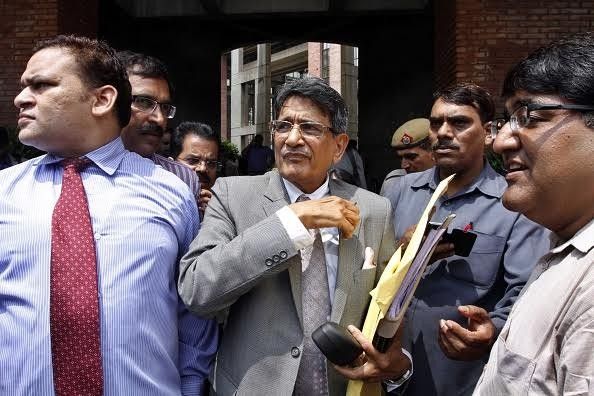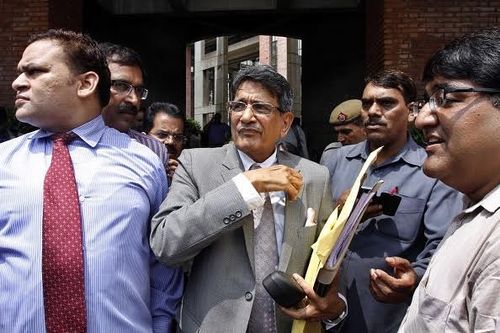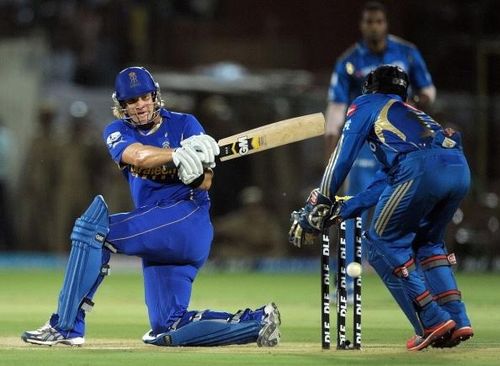
The IPL mess: Analyzing the clean-up options

All that the average Indian can identify from the Great Indian Cricketing Circus’ latest shenanigans is that the BCCI was going to try to walk the talk and actually get something done. But in the melting pot of the star-studded Indian Premier League (IPL), the ‘walk’ part is somehow buried deep under the explosive revelations, resounding aftershocks of impartial judgment, and overall confusion about how to get things moving. In effect, the game of cricket has taken a severe beating in terms of credibility.
It is a none-too-easy task for the powers-that-be in the IPL’s Governing Council. When the Supreme Court, through the Lodha Committee, doles out the quantum of punishment that the entire sordid saga (fixing, betting, conflict of interest and complete disregard for the rules) has brought upon all parties concerned, you not only feel for the ardent cricket fan, but also for those who are in the unenviable position of picking up the pieces and trying to put it all back together.
But it also presented them with a golden opportunity to crack the whip, remove every last speck of dirt staining the Gentleman’s Game, and revitalizing the controversy-prone Twenty20 league which was once the cynosure of all eyes.
Their decision to appoint yet another team to ‘study’ & ‘recommend’ is, for lack of a better word, laughable. Perhaps a fresh take on how things unfolded, what the way forward could be, and the immediate need that is to be addressed, will help.
I, Souga Chakravartty, spoke to four of Sportskeeda’s experts – Roh, Ishan, Yash and Sarah – on this entire ‘messy’ saga, and asked them to dig deep into the issues and give their opinions on moving forward. Here’s what they had to say:
Betrayed by the ‘Leadership’ – From the Fan’s Perspective (Roh)
Love and passion for cricket continue to be as potent as ever in the deepest pockets of our country. But the match-fixing debacle, which occurred at the turn of the 21st century, has added wariness to these aspects, imposing conditionality upon them. Furthermore, as India’s stock rose in the cricketing world, the element of caution slipped away, but following the myriad occurrences in the IPL, it’s been brought to the forefront yet again.
The fans, especially, are most aggrieved; they just don’t know whom to look for to set things right. While the BCCI took prompt and immediate steps to restore reparations last time around, it’s scrambling in this case. The reason? It’s the management – or rather those associated with the management – that’s been heavily involved in these scandalous manifestations.
It wasn’t surprising to see that the judiciary had to eventually step in to resolve the matter, making a mockery of the institution and those associated with its day-to-day running. Even as the apex legal body came up with a decision – and a rightful one at that – there were still those who seemed determined to nit-pick the decision, specifically regarding the future of the teams which were caught in the storm’s eye, thereby creating more confusion.
As a result, nothing looks to be sorted. Rajasthan Royals (RR) and Chennai Super Kings (CSK) still continue to hang in the precipice of uncertainty, with wild theories and unfounded speculations running rife.
From newer owners to manage the yellow & blue brigades until the two-year ban time frame gets completed, to the IPL functioning with six teams, and to two new teams filling in the empty slots, there has been no shortage of ideas being propounded by enthusiasts.
However, the enthusiastic take by the critics of the two teams and those wanting a clear and honest picture for Indian cricket – and the IPL – has nothing on the misery that’s befallen on the fans of the two teams.
It’s not unlike what had transpired amongst the country’s fans when some of the biggest cricketing names in the nation had been caught of wrongdoing. The offenders got off easy, but for the fans, it is a life sentence. It’s an unjustified outcome of agony and pain for only wanting to extend support to a team and to a bunch of players.
Irrespective of whether the troubled franchises continue to be a part of the league or not, the stark realization that for all their successes and glory, their beloved team had also stooped to such ignominy, will be enough to compound the misery of even the most die-hard devotee of a game whose credibility & integrity have been compromised by corruption.
Conflict of Interest – the Bone of contention (Sarah)
It’s easy enough to understand how the world’s richest cricket board came to be one of the key decision makers in the International Cricket Council (ICC). It was a fairly rapid transition from a ragtag bunch of officials whose sole interest was to develop the game, to a hardened core of money-minded professionals who saw the game as nothing more than a lucrative business venture. At the time, it was considered to be a giant leap for Indian cricket on the world stage.
Now, all that remains is tattered credibility, the fallout of extreme greed, and the relentless urge to derive maximum profit. Lalit Modi may not be a Gordon Gekko, but he certainly aimed to be. Unfortunately, greed is difficult to be sustained, and it’s not good.
In the course of two years, the spot fixing saga, the betting allegations and the conflict-of-interest charge all came to the fore, raising questions on the handling of the central board, and creating doubts on it being just another murky money churning organization, led by a group of fixers and corrupt minded officials, who focused rather on expanding their business ventures than the development of the game.
Narayanswami Srinivasan embodied the entire phrase conflict of interest (in big bold letters). Owning the Chennai franchise via his firm India Cements Limited despite being a full member of the Board was apparently a matter of indifference to him.
Clause 6.2.4 of the BCCI’s Constitution (I doubt if it was ever upheld by those in power) was summarily amended to suit his demands. Such are the signs of extreme corruption that even the staunchest crusader for justice might feel overwhelmed.
Luckily, the Supreme Court didn’t tolerate this nonsense for long. A case of conflict of interest greatly affects the principles of integrity, harming one’s reputation and should not be used as an allegation for corruption.
The SC has cleared Srini of corruption charges and betting controversies, but evicted him as the BCCI chief for damaging cricket’s credibility, questioning his integrity for staying on despite a family member being arrested for betting; raising doubts on how fair he was with the other 7 IPL teams. If he indeed was allowed to carry on, he would have been guilty of killing the spirit of cricket in India.
A horde of politicians run Indian cricket, who view a seat in the BCCI as a means of asserting their power. The immediate step that can be taken is to destroy the autonomous power within the board, getting it under the RTI, so that every move made within the board can be held accountable.
Cricket, which has transcended the boundaries of a sport in India, should be brought closer to the people who hold it dear, rather than a bunch of tycoons who view it as a money churning venture.
Options on the table – The Solutions and the Realities (Ishan)
After the IPL Governing Council meeting on July 19, Chairman Rajiv Shukla reiterated that the next IPL will be ‘bigger and greater’. But are the sponsors and potential buyers of franchises equally upbeat? The direct answer, at this point, is a resounding ‘No’ (at least for Parth Jindal of JSW Sports, which was rumoured to be in the race for buying one of the top franchises in the IPL’s chequered 8-year history).
Corporates want to be associated with something that is synonymous with winning, success, and clean enough to merit a long term partnership. None of the teams, especially the tainted lot, have that aura of respectability any more.

Shukla also insisted that all the stakeholders ‘were of the view that the show must go on’. Why not? Who would want to slay the cash cow, even if it is for a greater cause? We, Indians, want to be rich. Cricket can wait. We have Sachin Tendulkar. His reputation will feed our argument on cricketing matters for another century.
Coming back to the fate of the cash cow, what are the options?
Situation 1: Suspend the franchises for two years and hold a six-team IPL.
Organize an auction for the players of the two teams, and launch a fresh one again when the franchises return after two years.
Reality: This is the least likely to happen. Shukla maintained that they will go with a full eight-team tournament next year. It’s an open secret what the committee that has been formed to study the Lodha committee’s decision will be actually ‘studying’ – the loopholes to keep CSK and RR in business despite the suspension of their owners.
No wonder the committee appears so desperate – CSK is the most followed franchisee in the IPL and along with RR, which has earned recognition for unearthing new talent every year, fill up the tournament coffers quite healthily.
Situation 2: Terminate the two franchises (like Deccan Chargers in 2012) and open fresh bids for them.
Reality: Terminating the franchises is a much practical move. But then, prospective bidders are particularly wary of the mess right now. For companies that thrive and flourish on reputation, investing on a tournament that is riddled with legal dilemmas hardly sends out a positive message.
Further, if the BCCI decides to offer bids for a span of two years (instead of the usual ten-year or five-year cycle) before India Cements and Jaipur IPL returns to the scene, the repercussions will be two-fold – one, the institution’s obstinacy to return the tarnished companies their shares will be portrayed as spineless nepotism and inability to put its foot down on corruption, and two, not many investors will be interested to indulge in such a short-term agreement with low ultimate returns.
Situation 3: Make the BCCI-IPL Constitution clear and precise.
Reality: At present, rule 11.3, clause C of the constitution states that a franchisee can be terminated with immediate effect by written notice if “the Franchisee, any Franchisee Group Company and/or any Owner acts in any way which has a material adverse effect upon the reputation or standing of the League, BCCI-IPL, BCCI, the Franchisee, the Team (or any other team in the League) and/or the game of cricket.”
However, it doesn't go on to explain what is precisely meant by 'material adverse effect' or which authority decides upon it. Sure, there is a Disciplinary Committee (supposedly) formed by the Board - of which the President has to be a part - after every Annual General Meeting, but there is enough confusion whether it can interfere in IPL matters. The fact that President Jagmohan Dalmiya has been completely non-vocal about recent developments, further accentuates the doubt.
Thus, CSK's predicament and the argument of it having breached rule 11.3 is open to interpretation, courtesy the vague dictum of the Constitution, which again works as an advantage to those searching for ways to keep the franchise functioning. The loopholes are plenty, and the BCCI needs to quit the blind-man game now that the very credibility of the sport is at stake.
Within the next six weeks, the committee headed by Shukla will have to consider not only the future course of action, but also its probable impact on the players, fans and the IPL in general. The legal issues, however, seem destined to be delayed now that India Cements have threatened – in a (surprisingly?) typical Srinivasanesque fashion – to appeal against the statement.
The way forward – How to clean up the mess (Yash)
There are, in essence, four key perspectives that the governing body of Indian cricket should examine very closely if they are to dig themselves out of the quagmire they’re stuck in. IPL teams
Assuming any appeals against the Lodha verdict are rejected, as things stand, it appears likely that the India Cements owned CSK will be waiting for stay away from the tournament for 2 years and return back to the fold in 2018, while the lesser cash-rich RR is headed towards being disbanded.
IPL 2016 is to have at least 8 teams. This could be a gold mine for Kochi and Pune, both cities having seen their respective teams terminated in arguably harsh circumstances – to once again have representation in the IPL. It also offers a chance for cities like Ahmedabad (and possibly Ranchi?) to bid for a team in the popular tournament.
With the possible disbandment of RR, there may be an opportunity for Jaipur to have a rebranded team under new owners – and possibly have their home matches once again in the fortress of the Sawai Man Singh stadium.
Players
Players from the CSK & RR teams will be directly impacted by the implementation of the Lodha Committee recommendations. While the international stars like MS Dhoni, Suresh Raina, Steven Smith and James Faulkner have the assurance of their national team contracts, domestic players like Rajat Bhatia, Pawan Negi and Pravin Tambe have relied upon the IPL stage to showcase their talents and gain fame & riches.
Some RR players have been banned in the past on fixing charges, and players remain susceptible to approach from bookies. Recent events, however, will serve as a stern warning to the players and will discourage them from entertaining approaches from fixers.
The CSK and RR players should be allowed to enter the auctions once again, like it was done after the termination of Kochi Tuskers Kerala, so that the other teams get the opportunity to pick them and these players can continue to participate in the IPL.
Administration
The main villains in the eyes of the many in the whole saga – the BCCI should realize that the clean-up should begin from within and the first step should be to bring a sense of credibility and genuineness to the cricket board and its flagship tournament.
The latest verdict in the ongoing legal tussle, as well as the BCCI’s current directive to keep its members from getting into situations that show conflict of interest, will certainly shake the confidence of everyone in the functioning of BCCI, and the board should keep away all tainted officials like N Srinivasan and Sundar Raman in an attempt to restore the faith of the cricketing world.
Bringing in individuals with a clean and honest image – perhaps the likes of Anil Kumble and Javagal Srinath – to play key roles in the functioning of the board and the IPL will be helpful in cleaning up the image of the board and with it that of the sport in India.
Fans
Last but not the least, the fans – the major stakeholder in any sport which determines the popularity – their interests need to be taken care of. The IPL’s image has taken a severe beating among the fans after the corruption scandals and the faith among them needs to be restored. Concrete and tangible efforts to clean the game by BCCI will go a long way in fixing the confidence loss.
Summary
The main reason for the emphatic success of the IPL is the amazing response from the public – who flock to stadia in huge numbers to watch the games or dedicate their prime-time television spot to viewing the matches live on Set Max. Massive amounts of money ride on the response from the public for the broadcasters, sponsors and advertisers, and any dip in interest will affect the financial objectives of the corporates associated with the IPL and BCCI.
The question thus remains: Will the leaders prove their mettle and purify the game, or will it be the Ostrich syndrome all over again? The nation awaits with bated breath.